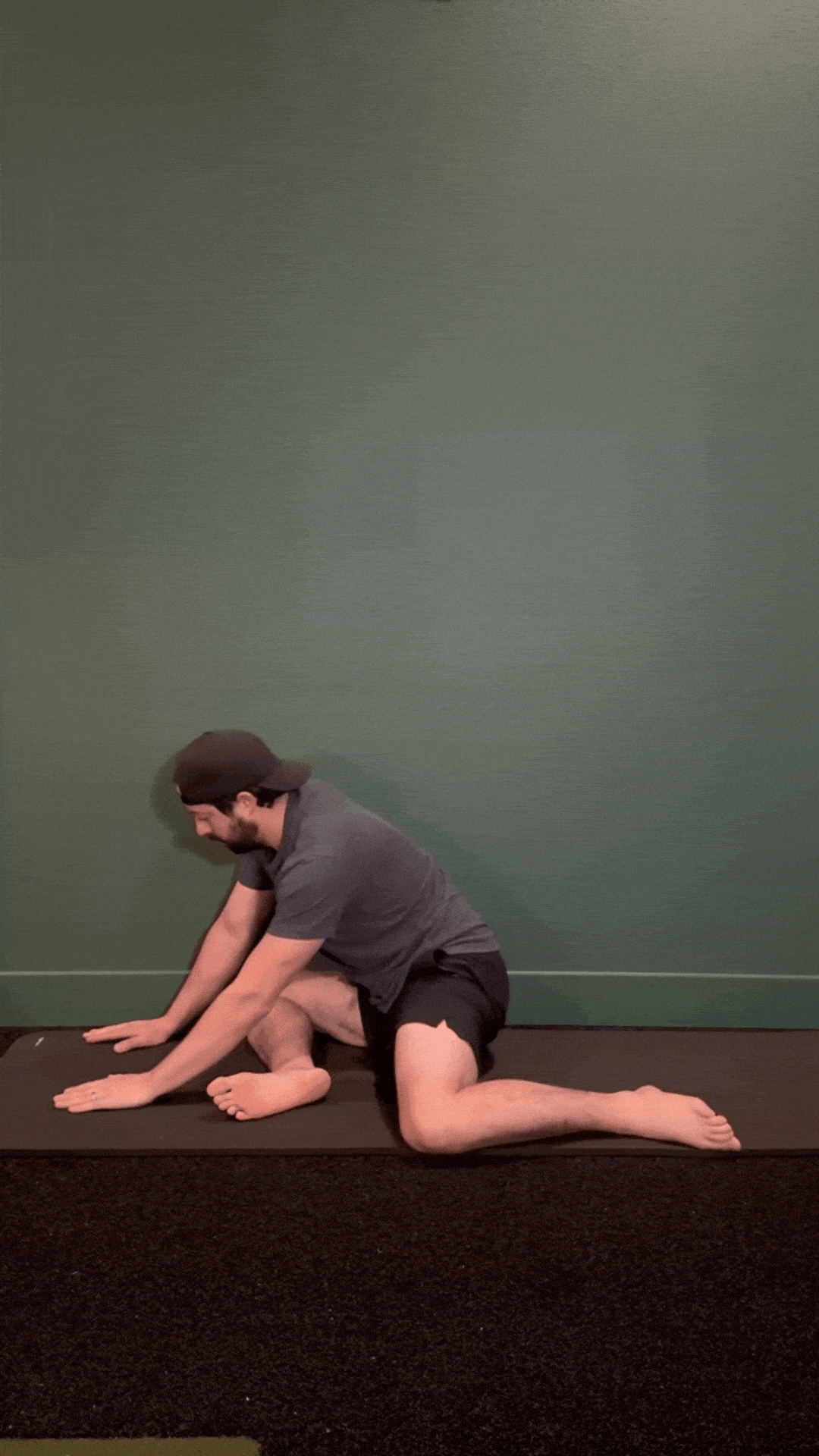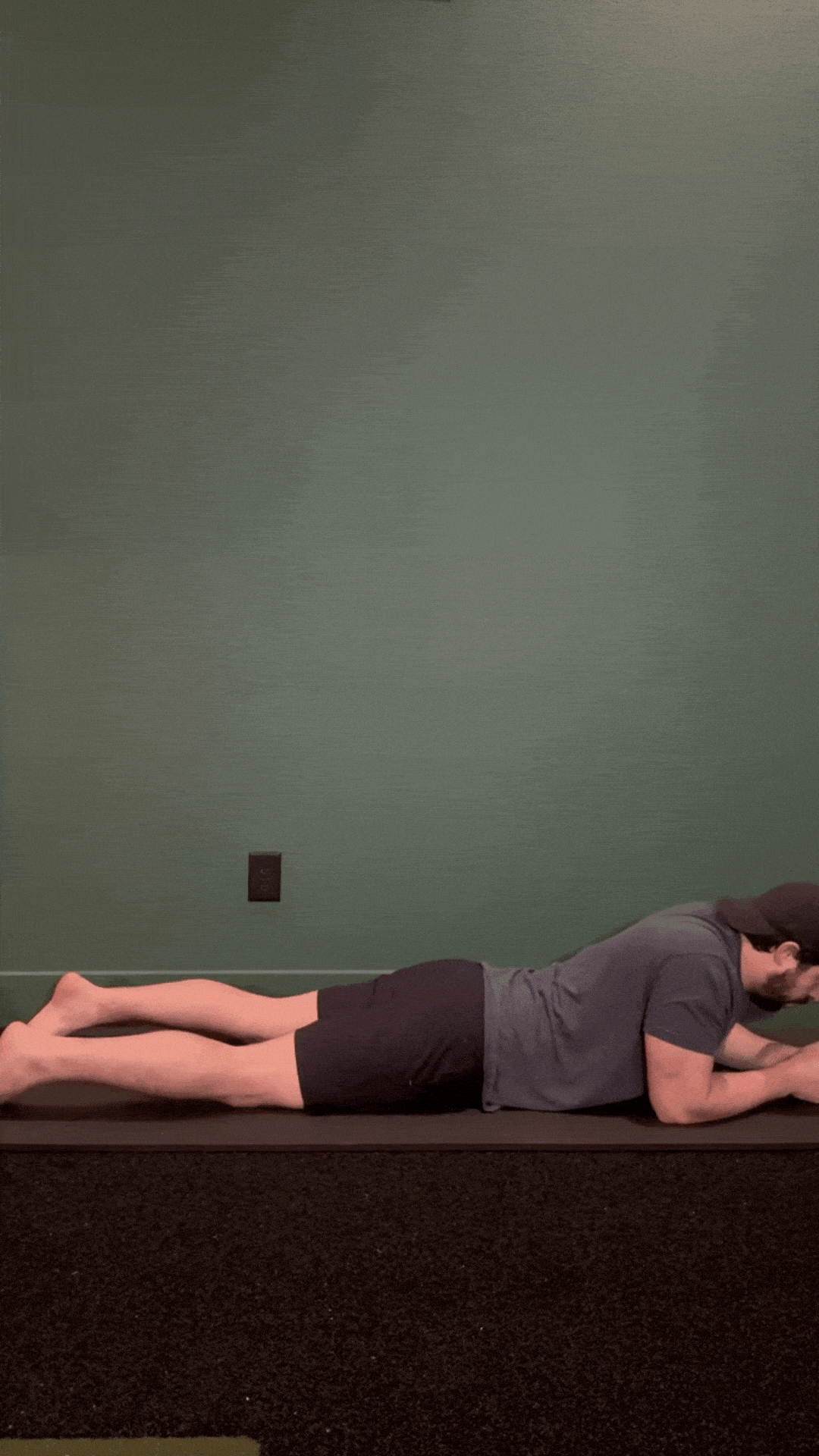- Move More Minute
- Posts
- How To Keep Walking/Running As You Age
How To Keep Walking/Running As You Age
Learn How I Help My Patients Keep Walking/Running As They Age

Read Time: ~4 minutes
Time to perform exercises: ~10 minutes
Hey there!
Let’s be honest, most people don’t stop walking or running because they “got old.”
They stop just because something hurts: their feet, knees, hips, or back.
The real problem?
They lost strength and mobility in key areas without realizing it.
And once those small losses stack up, every step starts to feel harder.
If you want to stay active and pain-free as you age, here’s the truth:
🟡 Stretching isn’t enough
🟢 End-range control is the key
This week’s routine helps you protect the 3 movements that get neglected the most when running or walking: hip internal rotation, toe extension, and knee flexion
Why This Matters
Every step you take depends on joint motions that quietly fade over time:
Hip Internal Rotation — When this gets stiff your lower back can start doing too much work and you’re more likely to get hip arthritis and knee injuries.
Toe Extension — If your toes don’t extend well, every step puts stress on your arch and can lead to plantar fasciitis or bunions.
Knee Flexion — When you lose this motion, it can make your stride shorter and increase the risk of knee pain or arthritis.
As these motions disappear, other joints or tissues are forced to compensate. That’s when pain shows up in your knees, back, or feet.
How to Maintain Mobility Over Time
You’ve probably heard the phrase:
“If you don’t use it, you lose it.”
That’s especially true when it comes to joint health.
But here's the part most people miss:
You don’t always lose mobility because the muscle is too tight. You lose it because the brain forgets how to use it.
This is known as neurologic tightness. A type of stiffness caused by your nervous system, not your muscles.
Your brain simply doesn’t feel safe in certain ranges, so it stops letting you go there (think muscle guarding).
That’s why stretching alone often fails.
How To Fix Neurologic Tightness
To reduce neurologic tightness and maintain true mobility, one of my favorite tools is end-range isometrics.
These are slow, controlled contractions at the edge of your available motion.
They teach your nervous system:
“This position is safe. It’s alright to use it.”
Heads up: These are difficult movements. It’s totally normal to cramp the first few days or even weeks. These are called neurologic cramps.
They happen when your brain isn’t used to activating muscles in those ranges. The more consistently you train there, the faster they go away.
In fact, cramping can be a great indicator:
The more you cramp, the more your brain probably needs that range.
The more control you build, the less it will happen over time.
Let’s put it into action.
This Week’s Exercises
Do these everyday until cramping subsides to protect the motions that keep your joints healthy.

1. Hip Internal Rotation Lift-Offs
How to Do It:
Sit in a 90/90 position (back leg behind you)
Try to lift your back ankle off the floor without leaning or twisting
3 sets of 10 second holds per side
Why It Helps: Restores deep hip function, offloads the spine, and improves hip flexion and stride efficiency.

2. Toe Extension Holds
How to Do It:
Stand barefoot
On one foot, lift all your toes off the ground while keeping the ball of your foot planted (think about pulling your toes to your knees)
Then set your toes back down
3 sets of 10 second holds per side
Why It Helps: Improves full-toe extension control and helps maintain health of the plantar fascia.

3. Prone Knee Flexion Holds
How to Do It:
Lie face-down on the floor
Bend one knee to bring your heel as close to your glutes as possible
Hold that end-range position with maximal effort (don’t use your hands or straps to help)
3 sets of 10 second holds per side
Why It Helps:
Improves active control and coordination of the hamstrings at full knee flexion (critical for shock absorption and efficient walking or running).
Wrap Up
If walking or running is something you want to do for decades to come, this is a great starting place.
You don’t need to overhaul your body. You just need to maintain the movements that get neglected.
Add this routine to your week and give your body a reason to keep moving well.
What Do You Want To See Next?
In case you didn’t know, each week’s topic is chosen by you. You vote; I write about it.
Want to dive into injury prevention, getting out of pain, or improving mobility?
Let me know what you want help with by voting below or responding to any of my emails.
What Should I Focus On Next Week? |
Thanks for being here and working on your movement.
See you next week!

Dr. Matt Moreno, D.C., C.C.S.P.®
The Move More Minute
When you’re ready, here’s how I can help:
1-on-1 Sessions – Virtual and in-person consults available. Learn More Here
Free Resources – Check out our guides, protocols, and soft tissue tools.
Here is the latest guide: How To Get Out Of Pain
What did you think of today's newsletter? |
Disclaimer: The information provided in this newsletter is for educational and informational purposes only and is not intended as a substitute for professional medical advice, diagnosis, or treatment. Always seek the advice of your physician, chiropractor, or other qualified healthcare provider with any questions you may have regarding a medical condition or before starting any new exercise program.
The exercises and suggestions provided are general recommendations and may not be suitable for everyone. If you experience pain, discomfort, or any concerning symptoms while performing these exercises (such as numbness, dizziness, or increased pain), stop immediately and consult a qualified healthcare professional.
Do not disregard professional medical advice or delay seeking it because of something you have read in this newsletter. The author, Move More Minute, and its affiliates assume no responsibility for injuries or issues that may arise from following the recommendations provided. By engaging with this content, you agree to do so at your own risk.
For personalized care or specific advice, please schedule an appointment with a qualified professional.